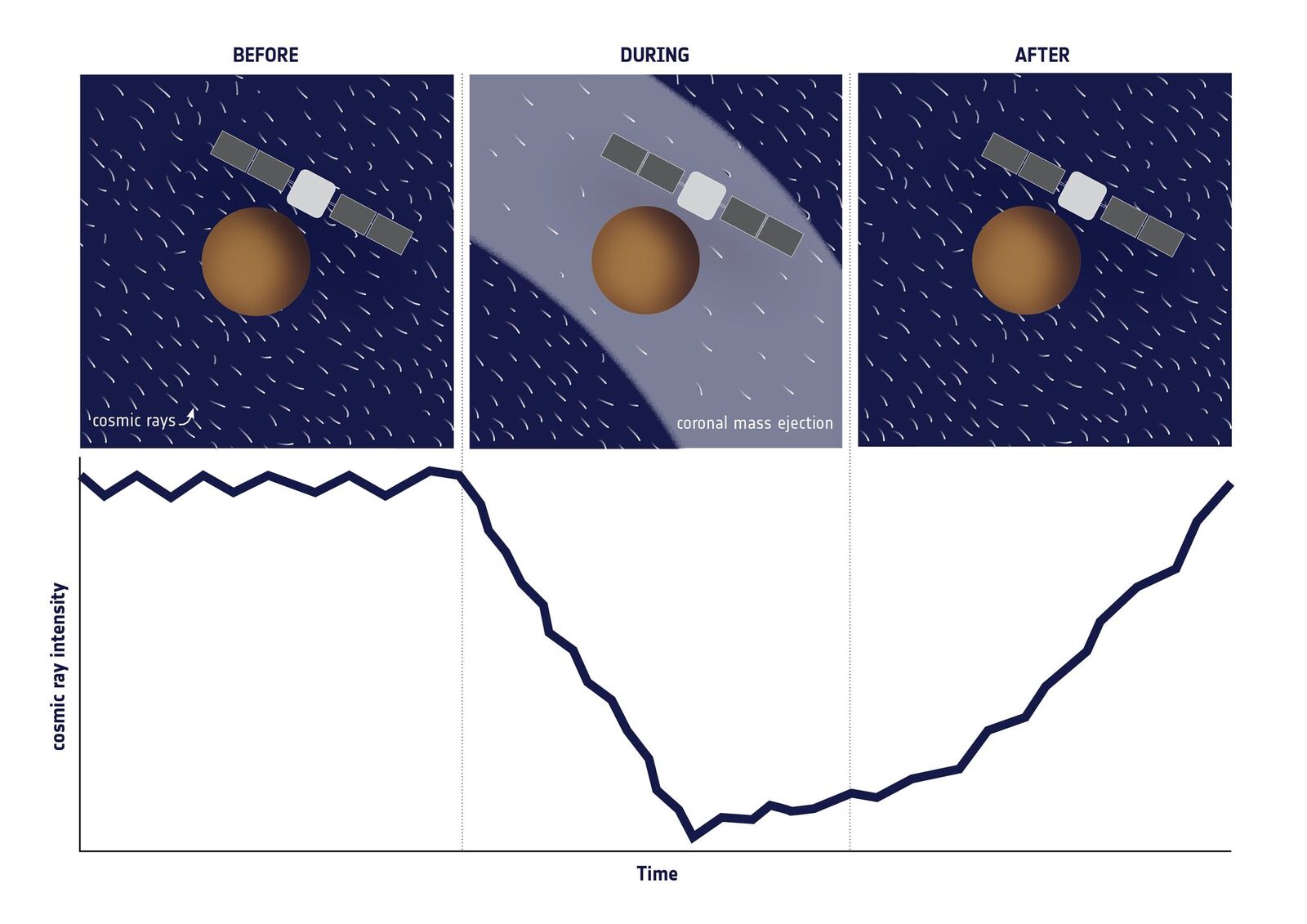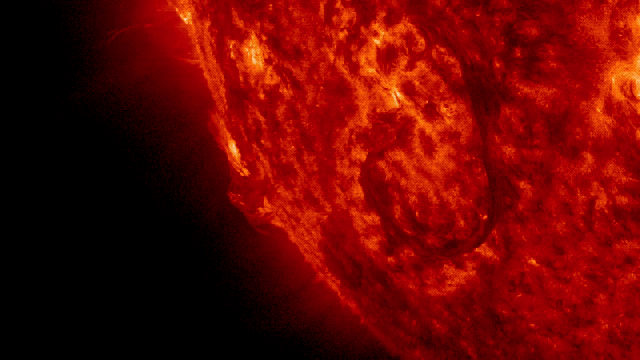On 14 October 2014, our Sun let out a great big burp, a coronal mass ejection that swept through the Solar System at an incredibly fortuitous angle. Several spacecraft (and one intrepid Martian rover) detected the solar blast, resulting in an unprecedented experiment that stretched all the way from Venus to outer reaches of the Solar System.
A solar eruption from 2014. (Image: NASA’s Solar Dynamics Laboratory)
Like so many other groundbreaking experiments in science, this study came about by accident. Back in 2014, scientists working with ESA’s Mars Express were preparing to investigate an incoming comet, but they also happened to record the imprint of a solar event — the interplanetary coronal mass ejection (ICME) of 14 October 2014.
Which got them thinking: What if other spacecraft recorded this event? And if so, could this solar blast be tracked as it made its way through the Solar System?
The answer was a resounding yes.
The ensuing collaborative analysis, the details of which now appear in the Journal of Geophysical Research: Space Physics, involved measurements taken by no less than 10 probes strewn across the Solar System, from ESA’s Venus Express and NASA’s STEREO-A through to the Curiosity rover on Mars, the New Horizons spacecraft, and (possibly) the Voyager 2 probe. This particular ICME — a giant cloud of highly magnetised solar plasma — was not directed at Earth, but the angle at which it spewed forth sent it into the path of Venus, Mars, Saturn and Pluto, planets around which humans have (or have had) an active robotic presence.
An ESA animation (below) visualises the coronal mass ejection as it traversed the Solar System.
By pooling their data together, this international team of scientists reconstructed the journey of this rather large ICME, allowing them to study changes in its speed, size and intensity. Previously, astronomers have used models and maths to estimate the spread of coronal mass ejections, but the data collected by these probes offers direct, on-the-scene evidence.
In addition to the spacecraft already mentioned, the ICME was also detected by the ESA’s Proba-2, the ESA/NASA SOHO spacecraft and NASA’s Solar Dynamics Observatory. It was monitored by three Mars orbiters — ESA’s Mars Express, NASA’s MAVEN and Mars Odyssey — and, as mentioned, by NASA’s Curiosity. Further out, the ICME was tracked by ESA’s Rosetta spacecraft at Comet 67P/Churyumov-Gerasimenko, and by the NASA-led Cassini mission at Saturn. It was felt in the outer Solar System as NASA’s New Horizons spacecraft was still en route to Pluto. It may even have been detected by Voyager 2, but at such at extreme distance, the blip in V2’s data may also have been caused by background solar wind.
Looking at the data, the scientists were able to paint a picture of a solar eruption as it propagated through space.

Planet positions on 14 October 2014. (Image: AGU)
When the Sun first let out this great big belch, the ICME burst forth at a speed of 1000km/s. By the time it got to Mars three days later, it had slowed down to 647km/s. Rosetta measured its speed at 550km/s, and by the time it got to Saturn — a full month after the ejection — it was travelling somewhere around 475km/s.
The scientists were also able to track the ICME’s magnetic field over time. Each probe experienced the initial shock, followed by increases in the magnetic field strength and the speed of solar wind. These effects lasted for days.

Sudden decrease in number of galactic cosmic rays detected. (Image: ESA)
Several craft were equipped with radiation monitors (namely Curiosity, Mars Odyssey, Rosetta and Cassini), exposing a well-known effect of ICMEs: A sudden drop in galactic cosmic rays. When an ICME passes, it acts like a protective bubble, temporarily brushing aside the cosmic rays. At Mars, the drop in cosmic rays was measured at 20 per cent, and the effect lasted for 35 hours. When it reached Rosetta, the scientists measured a decrease of 17 per cent, which lasted for 60 hours. At Saturn the effect was just slightly slower, lasting for nearly 100 hours. These results show that ICMEs slow down as they spread outwards, encompassing a wider region over the distances covered.
This unintended experiment was seriously cool, and it highlights the surprising degree to which human technology has spread out into the Solar System. That said, it would probably be better to track space weather by distributing dedicated, interconnected probes throughout the Solar System for this very purpose. Perhaps some day.
